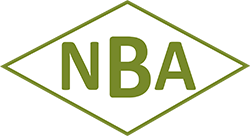Research on production systems for spring born Holstein-Friesian and Native breed x Holstein beef calves in Ireland
Category: Beef Systems
Introduction
Recent figures from the Central Statistics Office in Ireland show that the national dairy herd has expanded to over 1.2 million cows. The majority of these cows (57%) are bred to dairy sires, 30% bred to early-maturing breed sires (18% Angus and 12% Hereford, respectively) and approximately 9% are bred to continental breeds. Approximately 340,000 male dairy bred calves were born in 2016. Currently, steer beef dominates beef production in Ireland, while bull beef represents approximately 20% of the national male slaughterings. Given the low value for male dairy calves and the use of sexed semen on some dairy farms, it is possible that there may be an increase in the proportion of beef crossbred calves coming from the dairy herd. Research carried out by Teagasc has, to date, focused on modifying/establishing blueprints of production for Holstein-Friesian and early-maturing dairy beef crossbred calves (males and females). While all systems are focused on incorporating grazed pasture into the animals’ feed budget, alternative strategies are being investigated to examine the performance of finishing animals on grazed grass diets. The key drivers of profitability in all beef production systems are stocking rate and carcass output. Therefore, producers must identify production systems specific to their farm that maximises stocking rate and make best use of the facilities available on farm. The carcase weights, grades and feed inputs of the following systems from studies carried out by Teagasc are presented in the paper by Murphy.
Systems for spring born calves
- 15 and 19 Holstein-Friesian bulls
- 21 and 24 month Holstein-Friesian steers
- 19 and 21 month Native breed x Holstein heifers
- 21, 23 and 26 month Native breed x Holstein steers
Footnote comment from Simon Marsh.
The 19 month bull system is unlikely to be viable in the UK due to the lack of market outlets for these cattle. Also consideration must be given to health and safety factors with the management of yearling bulls at grass. Section 59 of the Wildlife and Countryside Act 1981 states that bulls of a recognised dairy breed over 10 months old should not be grazed in fields crossed by public rights of way. I can also foresee a lot of ‘management issues’ dealing with a mob of 18-19 month old Holstein bulls at pasture!
The black and white steers finished at 21 months off grass recorded a carcass weight of 275kg. Most UK abattoirs penalise light-weight carcasses with penalties of 40-90p/kg for carcasses below 260kg for O-to P- grades. With a mean carcase weight of 275kg approximately 30% would therefore be below 260kg and penalised. It is stated that concentrates will need to be fed for 60 days pre-slaughter however there still may be an issue with a lack of fat cover, especially with Holstein type steers which may demand relatively high levels of concentres if grazing quality is inadequate.
You will note in the article that the Early Maturing heifers finished at 19 months off grass have a target carcass weight of only 235kg. As discussed above some abattoirs heavily penalise light-weight carcasses. Consideration must therefore be given to marketing these cattle with the objective to sell them to either an independent butcher, boxed beef scheme or processor involved in a native breed premium scheme.
How much of a threat will it be to the UK beef industry with the recent expansion of the Irish dairy herd with more dairy bred beef calves being born? Some pundits predict a decline in the Irish beef suckler herd so it could balance out. Also the dairy bred calves (black and white males together with an increased number of native breed x Holstein steers and heifers) will have lower carcass weights than suckler bred calves. As readers will be aware the weakness of the pound against the euro since Brexit has influenced the competiveness of Irish beef on the UK market.

